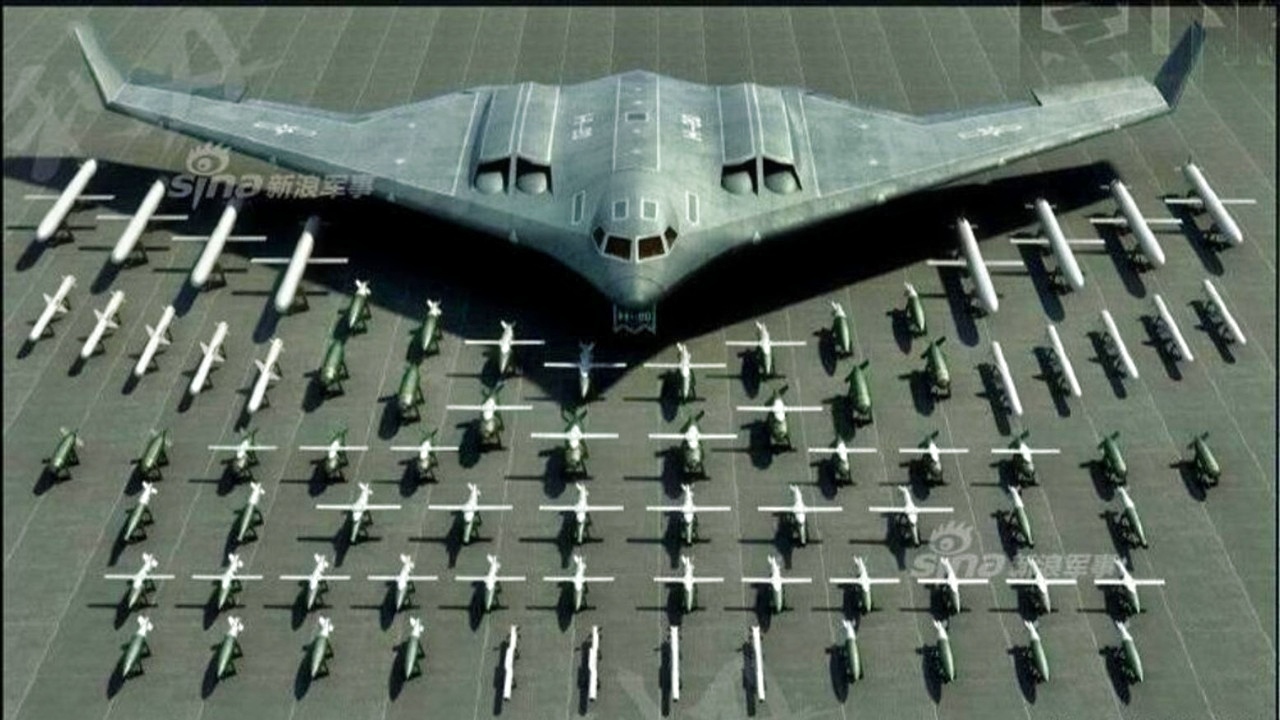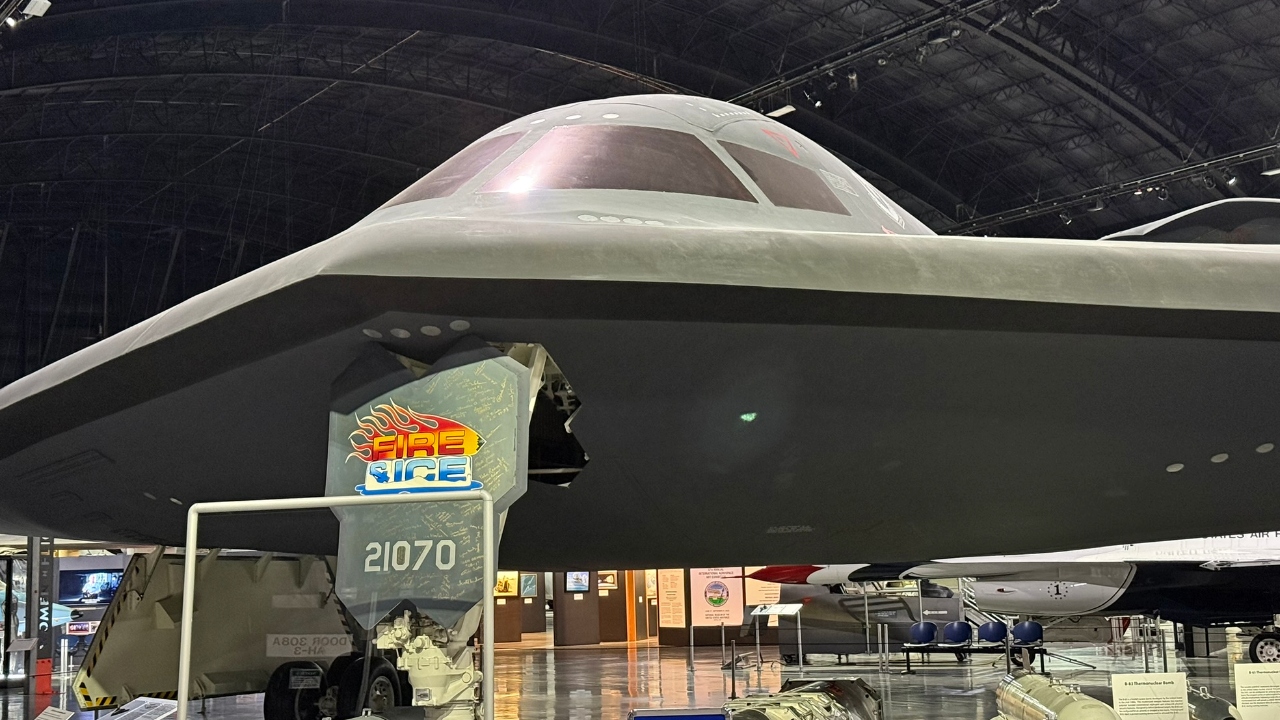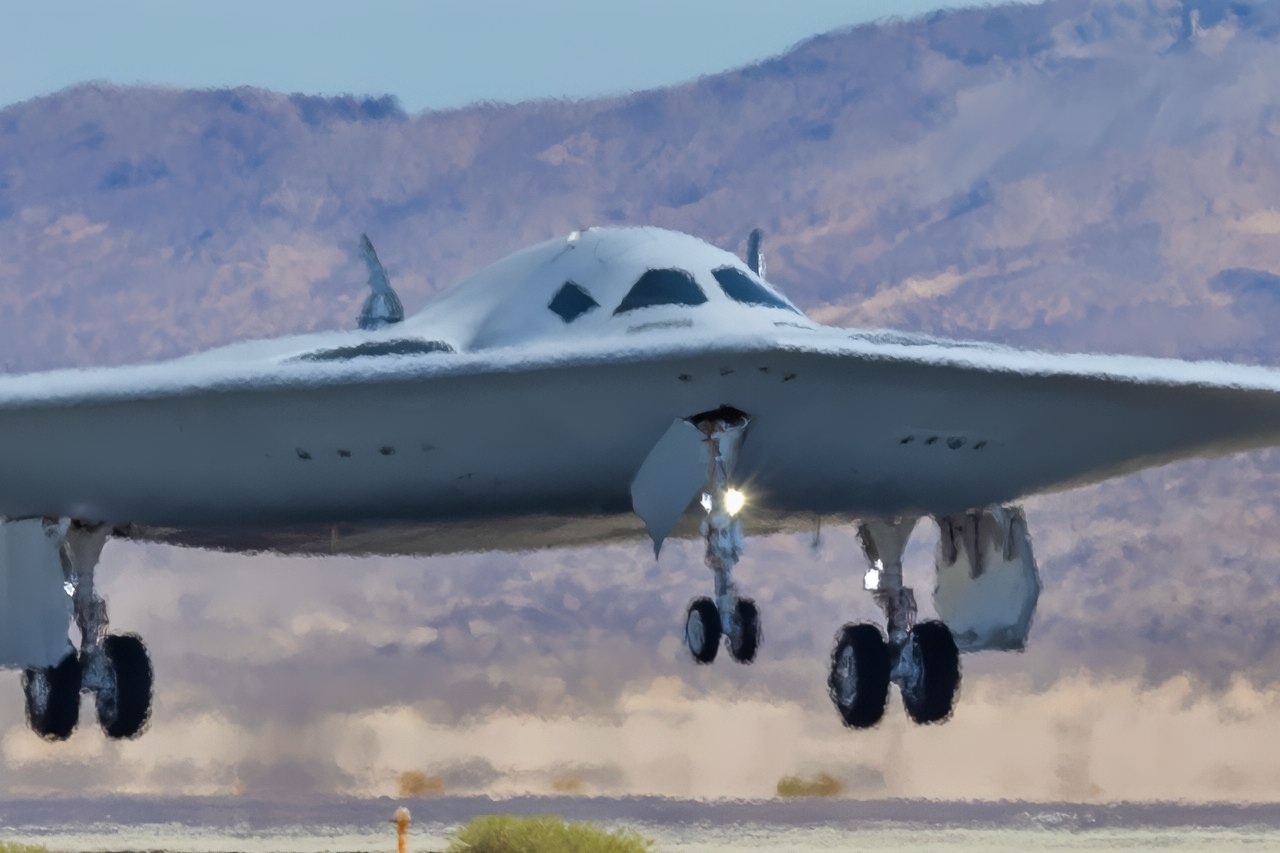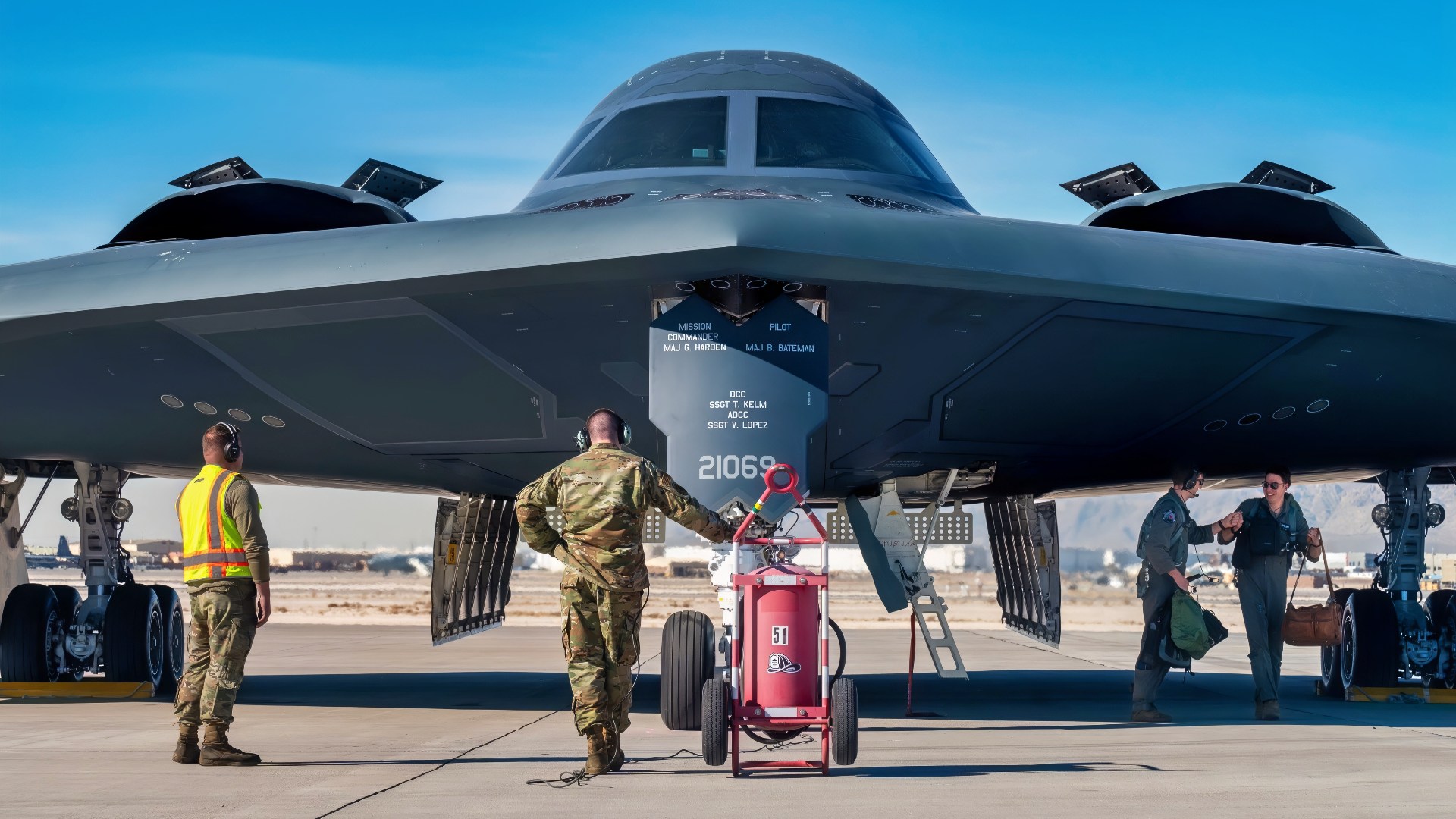Key Points and Summary – China’s long-rumored H-20 stealth bomber sits at the center of a growing mystery.
-Beijing’s next-generation, flying-wing bomber is expected to rival America’s B-21 with intercontinental range, broadband stealth and a nuclear payload, yet it still has not appeared in public.

H-20 Bomber. Chinese Internet Social Media Screenshot.
-Pentagon assessments warn that a future fleet of perhaps 50 H-20s, each carrying long-range cruise or even hypersonic missiles, could “mass” nuclear and conventional strikes against Guam, Hawaii or the U.S. homeland.
-Whether China is struggling with the technology or quietly perfecting it, U.S. planners must treat the H-20 as a looming strategic threat that will shape bomber forces for decades.
The H-20 Stealth Bomber Paradox
China’s new H-20 stealth bomber can be understood as an evident paradox: it is both concerning and mysterious, unclear, and simply not here yet.
Why is the People’s Liberation Army Air Force taking so long to build the H-20?
We can’t forget that, as China struggles to build a stealth bomber, an older version of the B-2 Spirit is sitting at the U.S. Air Force Museum in Dayton, Ohio. We have been out to see it (see the pictures below), and it makes you wonder about what China is having issues with.

Right Up Front B-2 Bomber USAF Museum. Image by Harry J. Kazianis/National Security Journal.
The Great H-20 Bomber Mystery
There are many potential explanations at either end of the spectrum: the delay could signal developmental and technological challenges, or, conversely, indicate that the platform is incorporating new generations of complex, highly advanced stealth technology.
Regardless, the emerging, yet mysterious Chinese H-20 stealth bomber is very much on the Pentagon radar, as it is expected to arrive within a few years as a rival to the US B-21 and bring unprecedented ranges and nuclear-capable, high-altitude broadband stealth to the global threat equation.

B-2 Bomber @ U.S. Air Force Museum. Image Credit: National Security Journal.
Very little is known about the H-20, and there have been few publicly available renderings.
And while the platform appears quite stealthy to the observer’s eye, top Pentagon weapons experts are concerned about the People’s Liberation Army Air Force’s production capacity and anticipated fleet size as they pertain to the H-20.
The Pentagon’s annual military report on China has consistently cited an H-20 threat, stating as far back as 2018 that the H-20’s 8,500km range armed with 2,000 km range CJ-20 ALCMs can “expand long-range offensive bomber capability beyond the second island chain,” placing areas such as Guam, Hawaii, and the US at risk.
The risk with the H-20 is not merely the prospect of a single bomber and its potential to elude even the most advanced air defenses, but also connected to the idea of “massing” a stealth bombing attack force at scale.
A formation of large numbers of networked H-20s could blanket large areas with the threat of cruise missiles and nuclear attack.
If the bomb-carrying capacity of the aircraft is anything like the B-2, it will be capable of traveling with a large, deadly arsenal of weapons, including nuclear bombs.
Therefore, beyond the mere question of range and global reach, the H-20 could present a grave “nuclear-mass” threat, according to top Pentagon researchers studying Chinese weapons and production capacity.
Pentagon research assessments suggest that, in less than a decade, China could potentially deploy a fleet of at least 50 H-20 bombers capable of collectively attacking with hundreds of nuclear warheads.
There is also the question of whether the H-20 could deploy with the ability to fire hypersonic weapons from the air, as the PLA AF has already deployed an air-launched variant of its YJ-21 on an H-6K bomber.
H-20 Sensing
A key question related to the H-20 naturally pertains to the extent to which its computing, sensing, fire control, and stealth capabilities can rival those of the US B-21.
There may not be a clear answer, yet a stealthy external configuration does not immediately suggest the platform has advanced computing, sensing, thermal management, or weapons integration sufficient to present a credible challenge to the US and to defeat US air defenses, and to be a comparable strategic threat to the US B-21.

A B-21 Raider test aircraft lands at Edwards Air Force Base, Calif., during ongoing developmental flight testing, Sept. 11, 2025. The B-21 will be the backbone of the bomber fleet; it will incrementally replace the B-1 Lancer and B-2 Spirit bombers. (U.S Air Force photo by Todd Schannuth)
Overall, however, very little is known about the specifics of the B-21, naturally, for security reasons.
Yet, Pentagon leaders discuss it as a platform capable of operating as a “sky” node command and control system able to receive, analyze, and transmit time-sensitive combat data from the air across domains while controlling drones from the cockpit.
Few specifics are available, yet the now-airborne B-21 is understood to incorporate paradigm-shifting levels of new stealth technology.
China Construction
Therefore, while the H-20 may appear similar to a stealthy B-2 or B-21 in terms of external configuration based on available public images, there does not seem to be a clear answer regarding the full extent of the threat.
Nonetheless, leading researchers explain that China’s civil-military fusion is well known for its high-optempo production capacity and an ability to “mass” an air-nuclear attack, which is something the Pentagon is taking quite seriously.
About the Author: Kris Osborn
Kris Osborn is the President of Warrior Maven – Center for Military Modernization. Osborn previously served at the Pentagon as a highly qualified expert in the Office of the Assistant Secretary of the Army—Acquisition, Logistics & Technology. Osborn has also worked as an anchor and on-air military specialist at national TV networks. He has appeared as a guest military expert on Fox News, MSNBC, The Military Channel, and The History Channel. He also has a Masters Degree in Comparative Literature from Columbia University
More Military
The U.S. Military Purchased 2 Russian-Made Mach 2.35 Su-27 Flanker Fighters
The B-2 Spirit Stealth Bomber Has a Message for the U.S. Air Force
To The Bottom In Minutes: China Has Countless Missiles Ready to Sink U.S. Navy Aircraft Carriers










